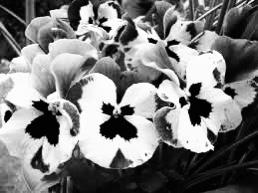
IS IT DIRT OR IS IT SOIL?
The word “dirt” is so ingrained in our common language that people say it all the time, but say dirt to a gardener you will make them cringe. The usual response is “It’s not dirt, it’s soil.”
So, what is the difference between dirt and soil? The answer is dirt has no nutritional value to support healthy plant life. Once organic materials are added dirt begins its transformation into soil. The experts say “Soil is alive, but dirt is dead.”
In forests and fields nature takes care of this process. Leaves and organic matter fall on the ground where weather, critters and insects begin to break it down. The tiny pieces work into the ground producing a food source for insects and micro-organisms which break it down even future until it can be absorbed by plants and trees, beginning the process over again. This is a major part of the circle of life.
Some plant life such as sea grasses have evolved to survive with a minimum of organic matter. High tides and flooding wash a wealth algae and minerals that seep into the sand where it is utilized by the plants.
Luckily for us, humans are able to speed up this process by amending the soil ourselves with chopped leaves, compost and fertilizers and other products. Nowadays we count earthworms as a sign for productive soil. Amazingly earthworms are not native, but micro-organisms did the job.
EARTHWORMS (Lumbricus terrestri)
The reddish-gray-colored common earthworm, often called a night crawler in the United States, is familiar to anyone with a fishing rod or a garden. They are indigenous to Europe, but are now abundant in North America and western Asia.
Earthworms are vital to soil health because they transport nutrients and minerals from below the surface via their waste. Their tunnels aerate the ground. An earthworm can eat up to one third its body weight in a day. A ‘healthy’ garden soil should have approximately ten earthworms per square foot.
Earthworms burrow during the day, typically keeping close to the surface, but are capable of digging down as deep as 6.5 feet
Contrary to playground legend, if a worm is cut in half, two will not grow. Therefore, you are better off leaving your earthworm undisturbed to get the best results. Amazingly earthworms can live up to six years in the wild.
Worm castings, also called vermicast, worm humus or worm manure, is the end-product of the breakdown of organic matter by an earthworm. These castings have been shown to contain reduced levels of contaminants and a higher saturation of nutrients than do organic materials before vermicomposting.
To encourage as many earthworms in your garden as possible add organic materials such as compost to your soil. Scatter it on top or rake it in and the worms will do the rest. This practice adds nutrients to your garden which is as good for your plants as it is for your worms.
Most importantly limit the use of pesticides and insecticides as they can harm or kill your earthworms as well as your intended targets.
The next time you dig up an earthworm while gardening, remember how essential they are and rather than just tossing it to the side, cover it back up. Earthworms wither and die quickly when left in the sun.
Happy Gardening,
James
